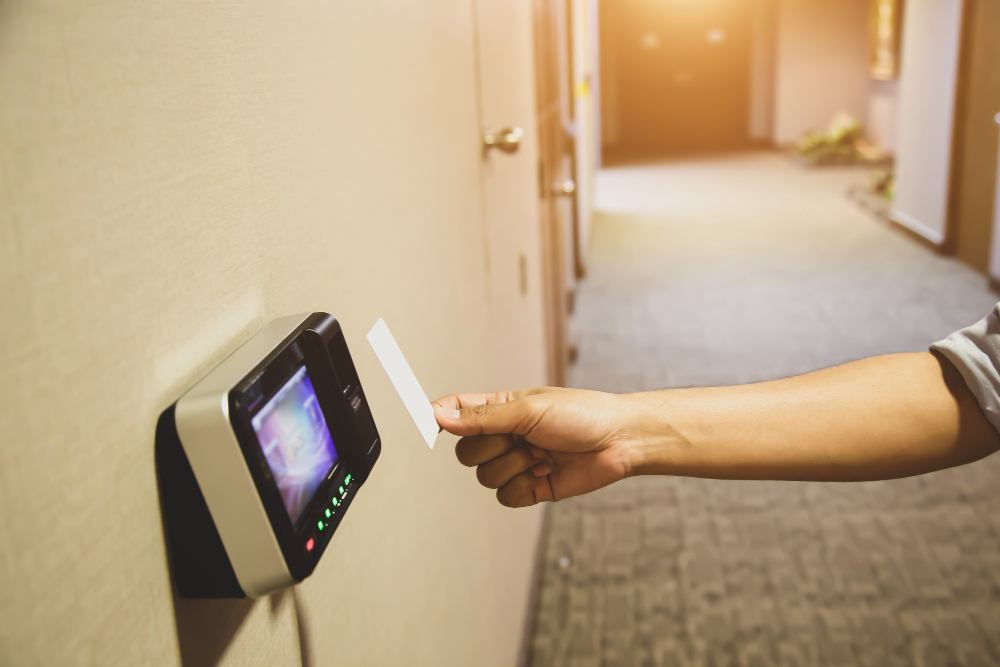Modes of Electronic Entry
Modes of Electronic Entry
Recently, there has been an array of electronic entry devices accessible for both residential and commercial clients. In terms of choosing the most applicable electronic lock for your business, it will be imperative to have an understanding of how these electronic entry systems work.
In this article, the specialists at QuickPro Locksmith will give detailed information about the different modes of electronic entry systems designed to fit all your needs.
Biometric Authentication
This is based on unique physical details of a person such as fingerprints, facial features, eye patterns, or voice to allow entry. Popularly used for mobile phones, laptops, and entry into houses, biometric entry ensures a high level of security and convenience. Yet, the doubts about privacy and data protection remain, which once again calls for the protection of biometrics using encryption and secure storage.
RFID (Radio-Frequency Identification)
RFID technology transmits electromagnetic fields that read the tags connected to objects or people. It is used in access control systems, transportation payment systems, and inventory management.
However, security issues, such as unauthorized scanning and data interception, must be addressed with techniques like encryption and access tokens.
Smart Cards
Designed with a microprocessor, and capable of processing and storing data safely to back up electronic transactions and access control. The time when the cards were just for credit and passport applications was far behind.
Now, they are perceived to serve various purposes and more broadly security functions leveraging cryptography, which means that they not only read and write data but also guarantee stable security by the use of digital signatures.
But cloning cards and physical tampering pose threats.
Mobile Authentication
The usage of biometrics, One-time passwords (OTP), or NFC enables mobile devices to function as unique security keys providing access to digital services, making payments, and opening doors.
However, protecting mobile phones and tablets against malware, phishing attacks, and physical theft should not be overlooked as they are things that can be used for stealing sensitive information.
Voice Recognition
This technology uses the voiceprint of a person and their vocal traits to identify them. Widely applicable in virtual assistance, telephone banking systems, and voice-controlled devices, voice recognition provides straightforward and hassle-free access to electronics.
Yet, a few issues like background noise, dialect variations, and mimicking are disadvantages to it.
Magnetic Locks
The magnetic lock comprises two parts: the armature and an electromagnet.
The electromagnet is installed on the door frame, while the armature plate is fastened to the door itself. The electromagnet pushes the panel as current passes through it, which keeps the panel locked.
However, it has a significant drawback: it can be quickly disassembled rendering it unfit for home or business security needs. So, when the power is off, the lock will stay unlocked, presenting a weak point for robberies.
Wrapping up
Electronic lock systems deliver reliable security and access control. By using the latest technology and replacing the old mechanical locks with a digital method of authentication, they ensure the highest level of protection available.
These systems perform multiple functions, which we have mentioned in this article. Get in touch with our locksmith to upgrade the electronic access control system which will enable your building to be safer and more secure. When it comes to your lock installation, QuickPro Locksmith is easy to find and always available to help!

